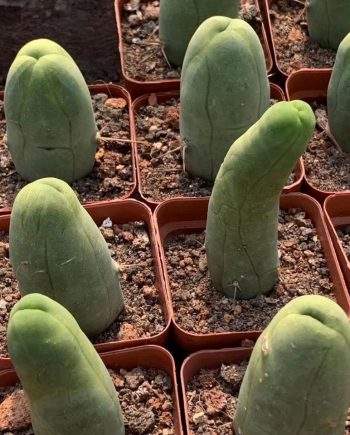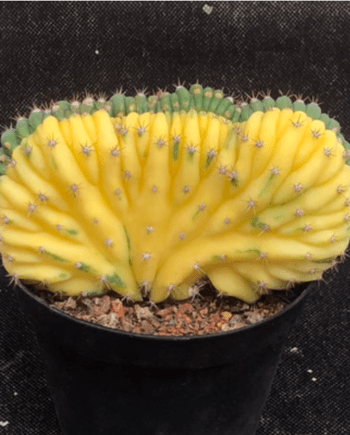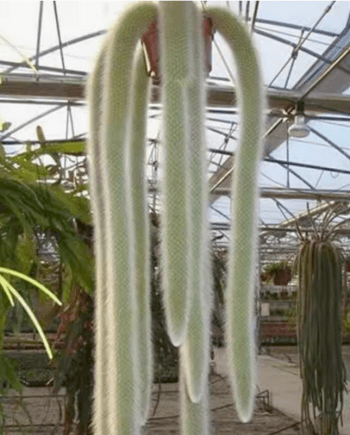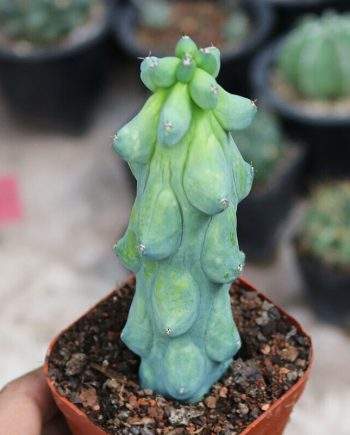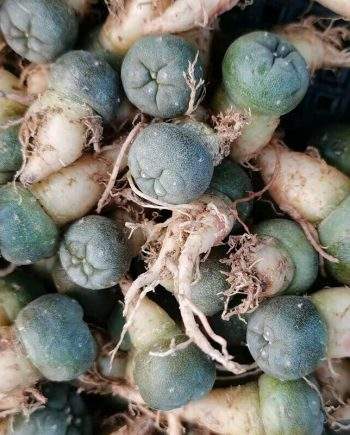A grafted cactus is created through a process called grafting. Grafting involves joining two different cactus species together to create a single plant.
In the case of cacti, grafting typically involves attaching a small, desirable cactus species known as the scion onto the rootstock of a different cactus species. The scion is usually a slow-growing or rare variety that may be difficult to cultivate on its own roots. The rootstock, on the other hand, is often a fast-growing and hardy species that provides a stable foundation for the scion to grow on.
Grafting is a very ancient technique, Historical records of grafting are dated back to 1560 B.C, Theophrastus, philosopher and pupil of Aristotle, is sometimes known as the Father of Horticulture. In his treatise on propagation, written ca. 300 BC, he describes grafting in a curious way, as if it was a variation on cutting propagation in which the scion takes root in the rootstock.
The grafting process involves carefully cutting both the scion and rootstock, then attaching them together so that they can fuse and grow as one plant. Once the graft has healed and the scion has begun to grow, it will receive nutrients and water from the rootstock, allowing it to thrive.
This can result in unique and visually striking plants with the desirable traits of the scion, such as colorful flowers or interesting growth patterns, combined with the vigor and resilience of the rootstock.
Overall, grafting allows growers to produce cacti with desirable traits more efficiently and effectively than traditional propagation methods, making it a popular technique in the cultivation of cacti and other plants.
here’s a video of a good how-to graft, it should give you a good understanding of how to do it
Degrafting, refers to the process of removing the scion (the desired top portion of the grafted cactus) from the rootstock (the base portion) in a grafted cactus. This process is typically done when the scion has grown sufficiently on its rootstock and no longer requires the support and boost of the rootstock.
Degrafting is often performed for several reasons:
- Independence: Once the scion has developed in size and can sustain itself independently, it no longer requires the nutrients and support provided by the rootstock.
- Aesthetic purposes: Some growers prefer the natural appearance of cacti growing on their own roots rather than on a rootstock.
The process of degrafting involves carefully cutting the scion from the rootstock using a sharp, sterile knife or blade. It is essential to make a clean cut to avoid damaging the scion or rootstock. Once separated, the cut bottom on the scion needs to be left to the open air to dry ( adding some sulfur powder and or rooting powder can both help with this process) for 10-14 days, then the scion can be potted in well-draining soil and cared for as an individual plant being mindful of minimal amounts of water that it needs at this point. until there is roots you are risking the chance of rot.
After degrafting, both the scion and rootstock may require some time to adjust to the change. It’s essential to provide appropriate care, including proper watering, lighting, and temperature conditions, to ensure the continued health and growth of the newly degrafted scion.

